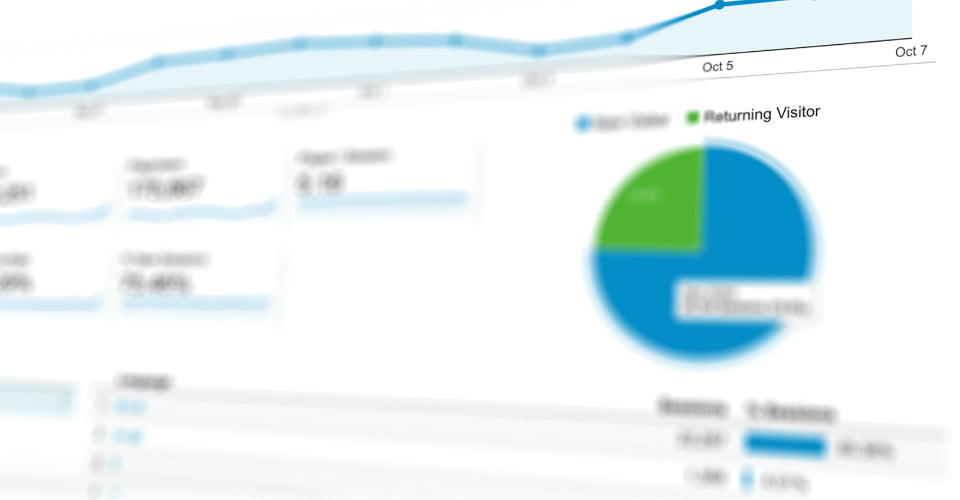Google Analytics (GA) is one of the most widely-used website analytics tools available. It collects data and provides KPIs that allow for easy analysis of the performance of your online marketing, content, products, and so on.
However, with the wealth of data it provides to users, its usefulness can be compromised by a lack of understanding of what the metrics determine. The best place to start in understanding these metrics is to gain a solid understanding of the fundamentals; these being, users, sessions and pageviews.
Let’s take a look as to what each are…
Users
In general terms, a user is a visitor to your site. But there are two very distinct types of users:
- Those who have never visited your site before, these being new users
- Those who have, these being returning users.
Google determines who is a new and who is a returning user using cookies. If a cookie is not present on the users’ device, Google creates one and considers this a ‘new’ user. If there is a cookie present, Google considers this a ‘returning’ user.
The best way to find metrics that look at new vs returning visitors is under the Audience > Behaviour section in GA. This is a particularly useful tool for ecommerce sites that want to compare metrics such as revenue from new users to the site, and those returning.
Sessions
A session essentially represents any singular visit to your site. Whether a user only visits one page and spends 10 seconds on it, or views 20 pages over 3 hours, they would both count as one session. Although a user that returns to the site would then be a ‘return user’, each time they visit the site they would start a new session. By default in GA, a session lasts until there's 30 minutes of inactivity, but this can be adjusted here.
Sessions provide a fundamental measurement of site reach and growth. It assists in providing an overall snapshot of site performance. You can find these analytics in GA by going to Audience > Overview > Sessions.
Page Views
A pageview represents each individual time a page on a website is loaded by a user. One session can include multiple pageviews if the user navigates to other pages without leaving. A unique pageview would be counted the first time a user lands on a page during a single session.
Pageview measurement is great in assisting in deciding which pages to target with calls-to-action, regularly update with fresh and relevant content, and include in creating visitor funnels.
You can find pageviews in analytics by navigating through Reporting > Behaviour > Site Content > Content Drilldown.
How to use these metrics?
All three metrics are valuable to measure in their own right – sometimes you just want to keep track of overall sessions. However, the best analytical findings can be achieved when looking at and combining different metrics in Analytics. This can include looking at all three metrics mentioned above – usually in a process of getting more granular and digging deeper. Of course, this is “just” information – it’s knowing what to do with the information that is important.
Generally, when we talk about “website visits”, we refer to sessions. It is the standard and most used metric for seeing how popular a site is, gauging traffic volumes and seeing broad trends over time. This is generally the starting point.
If you want to get more insight into how your site’s being used, looking at new vs returning users can be very helpful, whether for the site as a whole or a specific page. Understanding this balance and making sure it matches with the strategy is important. If you’re an informational site, new users and returning users can be equally important. For ecommerce platforms, returning users tend to be more likely to complete a purchase. Looking at data at a more granular level can help you tailor the experience.
Pageviews stand slightly apart from sessions and users because the latter tend to deal with the site as a whole, while pageviews are generally focused more on an individual page. This is not always true – if you have a website with a high number of pages and sessions, but low page views, it could mean you have a bloated sitemap or people aren’t engaging with deeper pages.
The beauty of using Google Analytics and having an understanding of these metrics means you can dig deeper. For instance, you can segment these metrics by acquisition channel – where does the session/user come from. Acquisition channels are another basic element of analytics that are important to understand when looking at traffic. Examples of channels include organic (searches by users in a search engine and clicking on links in the results page), paid (visits that come from a click on ads from a search), email (traffic that comes from links in an email), social (links from social media posts etc.), referral (traffic that comes from a different site) and direct (where a session starts from someone directly going to the site – typing in the URL or clicking a bookmark for instance).
Essentially, it’s about combining these and other metrics in Analytics that gives you valuable insight and actionable objectives for improving website performance.



